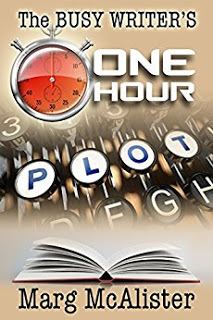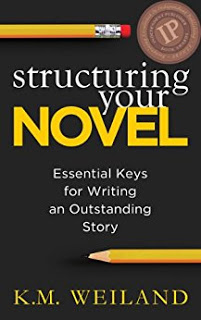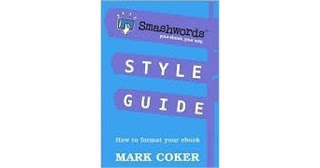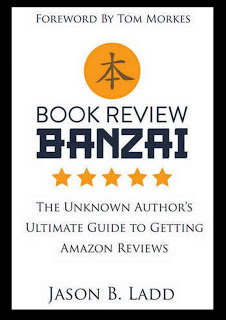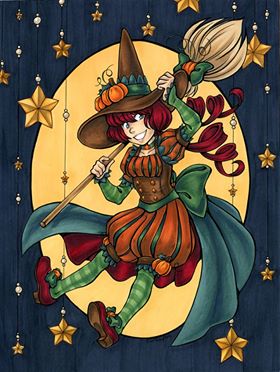1.) Banish those Assumptions
Maybe you already know how publication works and what being a published author is like. Or maybe you just think you do ….
Ten Things That Might Surprise an Unpublished Author
This little article by Denise Moncrief may burst your bubble. But it’s always better to know the truth so we can figure out how best to deal with the reality, right?
2.) Outline and Structure Your Novel
If you really have finished writing the book, this step probably won’t be necessary. But if you’re wondering if all your scenes are truly in the best order or whether the progression of your plot makes sense, here are a few helpful links you’ll want to check out. (Or bookmark them for when you’re ready to start planning the sequel!)
A Quick-Start Guide to Story Structure Methods
Janeen Ippolito lists and explains a number of different ways to outline a story’s structure. She includes diagrams and links to books that go into more detail about the different methods.
6 Ways to Outline Your Novel Faster
K.M. Weiland presents six quick suggestions for story outlining. Unlike the ones in Ippolito’s list, they aren’t really complete methods as such. They’re more like possible angles of approach.
Personally, I can highly recommend two books about plot outlining that I now use with every novel I write. Clicking on the pictures below will take you to the Amazon pages where you can find out more about the books and order them if you’d like to. I promise, they’re worth it!
3.) Choose a Title
Perhaps you already have a title for your book. But if you haven’t decided on one yet, here are some suggestions to consider.
How to Choose a Book Title That’s Perfect for Your Story AND Good Marketing!
K.M. Weiland explains why the right title matters so much and puts forth three ways to pick a good one.
How to Choose the Right Book Title
Anne R. Allen presents three different ways to choose the right title. (She also has an interesting list of famous books and their little-known original titles.)
20 Book-Title Hacks for Any Genre
David H. Safford suggests a whopping twenty different ways to come up with a good book title: everything from making it a story symbol to using a famous quotation.
3 Book Title Mistakes that will Murder Your Marketing Efforts
Using the right or wrong kind of title can have a big impact on how many people buy your book. Dave Durden explains how.
4.) Start Building a Platform
An author platform is important for anyone who wants to sell books to more than just their personal friends and family. Even if your book isn’t ready for publication yet, it’s never too early to start building your platform through your website/blog, on social media, etc.
Building an Online Presence: Websites, Blogs, and Social Media for Authors
This is a collection of information about starting a website or a blog, along with different types of social media (Facebook, Twitter, Pinterest, Instagram, Google+, Tumblr, YouTube, and LinkedIn) and how authors can use each one. There’s even a link to an article about what to do if you don’t have (or want) a social media presence at all.
5.) Join an Author Group
I cannot overemphasize how much this will help you. If you don’t have a physical group of local authors to be a part of (or even if you do), find an online one (or two, or three, or four …). Try searching Facebook for “authors” or “author group _____” (your genre). If you end up in a group without much interaction, or where people spend most of their time just advertising their books to each other, find a new group. Joining some excellent Facebook author groups has helped me more than anything else as an author. They are a great place to share ideas, ask questions, and support each other in our journeys as writers. You can also ask around in author groups for beta readers, editors, cover artists, etc.
The following groups may or may not be a fit for you and your books, but here are a few that I have personally found helpful. Below each one, I’ve included excerpts from the group’s description on Facebook. If nothing else, they’ll show you some examples of what’s out there.
Clean Indie Reads
Finally! A book / author group that isn’t just a post-and-run! We are here to offer real, useful support. Welcome to the workplace that feels like home.
CIR is a group for INDIE AUTHORS of FLINCH-FREE FICTION (no explicit sex or violence and limited swearing). We’re here to support each other in the whole process of writing/publishing/marketing quality indie books.
Use this Google spreadsheet of service options to see if we’re a good venue for you. http://bit.ly/IsCIR4U
Iron Sharpening Iron
Before requesting to join, please be aware we have three requirements for joining, which you will be asked to affirm:1) That you are a Bible-believing Christian2) That you are (or are working to become) a Christian Author, or are an enthusiastic fan and reader, in the Speculative Fiction genre3) That you are willing to try and be an ACTIVE member.
This is a CHRISTIAN group run by biblical principles. The idea behind the group: Proverbs 27:17 “Iron sharpens iron, So one man sharpens another.” It is not by placation and empty praise that we learn and grow, but it is by godly brothers and sisters, practicing “truth in love” that we can learn and grow together to improve our collective witness for Christ in the literary world. May the Lord bless you all in your work.
Christian Indie Authors
Christian writers with works not openly Christian are welcome! Please alert us to language, sex, or violence when sharing or asking for a review. Liberty in Christ can give different standards. Share what you can.
Please don’t post and run. Take a moment; offer assistance to a fellow Indie. Share a book; answer a question. We are a family.
To share blogs etc you must be an active member. What is active? It’s talking. It’s taking a few seconds to share a post. It’s being a part of our family. Not everyone is going to post. We have members who just read.
Christian Indie Authors Tweet Exchange
This might be helpful, too:
60+ Facebook Groups for Authors – Promote Your Books, Blogs, and More
Shelley Hitz lists groups of readers, groups of writers, groups specifically for sharing discounted books, etc.
6.) Enlist Beta Readers
Beta readers are people who read through your book before it is published for the purpose of giving constructive feedback.
All About Beta Readers: 7 Ways They Can Improve Your Book
In this thorough article, Anne R. Allen talks all about why beta readers are necessary, where to find them, what kinds of people are likely to make good beta readers, etc.
Revise It! Recruiting and Using Reader Feedback
Janeen Ippolito lists different types of readers, along with suggestions for recruiting the most helpful ones and utilizing their feedback.
What to Ask Your Beta Reader
It’s helpful to give beta readers questions to answer as they read your manuscript. Author Valerie Comer has a great list of questions. You’ll want to add to them with specific questions about your own story and characters.
5 Steps to a Thorough Book Edit
Once you hear back from your beta readers, try implementing Liberty Spiedel’s suggestions for how to utilize their feedback.
7.) Edit and Proofread
There’s way too much to say about these essential steps to put it all here.
Editing and Proofreading: DIY Tips and Professional Resources
This blog post is a compilation of the best editing and proofreading advice I’ve found, along with links to some professional editors’ and proofreaders’ sites. DO NOT EVEN THINK OF SKIPPING THESE STEPS! No matter how good a writer you are, your manuscript still needs to be edited and proofread.
8.) Decide if You Want Illustrations
I don’t mean a cover picture (we’ll “cover” that separately, pun intended). Not all books need inside art, but if you’re writing certain genres (like children’s fiction or some types of nonfiction), you’ll probably want some. Many authors also like to have pictures of their characters to use in blog posts and promotional materials, even if they don’t end up in the book itself.
Awesome Illustrators: A Collection of Artistic Resources for Authors
Here’s a list of some illustrators who have been personally recommended by authors I know. You can see some samples of their artwork under their names, along with links to their websites. Of course, a web search with your specific genre will turn up many more.
9.) Decide Whether Your Book Needs a Map
Most books don’t. But if you’re writing historical fiction, fantasy, or science fiction, it might be helpful (and fun) to include one at the beginning. Several of the illustrators at the link above also do maps. If you prefer to make your own, check out the links below.
Fantasy MapMaking Tutorial
In this video, Jessica Khoury shows how to make your own map. It’s part 1 of 5, so don’t forget to go on to her other 4 videos when you’re done.
10 Rules for Making Better Fantasy Maps
Lauren Davis has some great points that you should keep in mind before you start.
10.) Create a Cover (or Hire a Cover Artist)
Obviously, every published book (ebook or paperback) needs a cover.
The Perfect Cover for Your Book
In this blog post, I include links to dozens of helpful resources about cover design. Whether you plan to make your own cover or hire a professional, you should be certain you know these basic principles. Do you have an artistic friend you hope will help you out? Don’t assume they’ll be awesome at making book covers just because they’re an awesome artist. Pass on this info to them to make sure they know what’s expected in book cover design. I’ve also included a list of professional cover artists and the websites where you can check out their services and contact them.
11.) Decide How to Publish Your Book
Do you plan to self-publish, or do you hope to have your book traditionally published by a major publishing company or small press? Warning: for a new author, landing a contract with a major publisher is almost impossible. Getting a small press interested is a little more likely but can still be quite difficult. Self-publishing is easy, as long as you’re willing to put in the work.
Self-Publishing vs. Traditional Publishing: Which is Better?
This article by Gary Smailes is long but well worth the read. Basically, it tells everything you need to know about how both options work, including their pros and cons. It also talks about agents. I highly recommend reading it before you make your choice.
Whatever you do, DON’T fall prey to a “vanity press” promising to publish your book for you! These are organizations that charge unsuspecting newbie authors huge amounts of money – often thousands or even tens of thousands of dollars – and in return may provide them with an ebook and hundreds or thousands of paperback copies that the author is usually responsible for selling. Most authors only make a fraction of their money back and end up with a basement full of unsold books gradually yellowing with age. If in doubt about whether a publishing company is reputable or not, it’s a good rule of thumb not ever to go with anyone who makes you pay upfront for their “services”. Reputable publishers make their money by taking a percentage of what you make in sales after the book is published, not by charging you for their work.
Beware of Sharks in Publisher’s Clothing
Judith Briles explains how to spot and avoid such publishing predators.
12.) Write a Blurb
You will need a blurb to go on the back cover of your book. Even if you only plan to publish an ebook, the blurb is the description that will go on Amazon or other retailers. Don’t make the mistake of thinking that a blurb is simply a summary of the story – there’s much more (and in some ways, much less) to it than that!
How to Write a Book Blurb (and a Synopsis, Logline, and Tagline)
In this blog post, I’ve compiled a list of resources for blurb writing. You’ll need to have your blurb ready before you go on to the next two steps, so these should be helpful.
13.) Format and Publish Your Book as an eBook
There are a number of platforms out there for publishing ebooks. To start with, you’ll definitely want to make your book available on Amazon, since it’s the biggest by far. (However, I suggest not actually completing the publishing process until you’ve considered the “wide vs. narrow” issue discussed a couple of links down in this list.)
How to Prepare Your Manuscript for Sale on Kindle without Hyperventilating
Hey, it can be a stressful process! When I was new to indie publishing, I couldn’t find a single list of all the steps to take for formatting an ebook. I had to scour the web for each step, and it wasn’t easy! So I combined everything I eventually figured out into one list, which I still refer to every time I publish a new book. I hope it’s as helpful to you as it is to me.
Wide vs… Narrow?
Amazon offers various incentives to authors who agree to make their books exclusively available on its site. Choosing to also sell one’s books elsewhere (such as such as through Barnes&Noble, Kobo, Google Play, or Apple iBooks) is known as “going wide”. In this article, J Philip Horne discusses the pros and cons of each choice, along with more information about what’s involved.
Distributing Your Books
You can go wide by distributing your book individually to each retailer, or you can upload them to a distributor that will send them everywhere for you and consolidate your earnings. Here, J Philip Horne talks about the pros and cons of both methods.
Smashwords vs. Draft2Digital
Smashwords and Draft2Digital are the two biggest ebook distributors. Dave Chesson compares them with a handy chart and links
Aggregation without Aggravation: Pronoun and PublishDrive
Pronoun and PublishDrive are two more major ebook distributors. David Kudler compares them here and also includes links to both sites.
Smashwords has a short ebook that you can download for free with information about how to format your manuscript before uploading it to their site for distribution. Clicking on the picture below will take you to the book’s Amazon page.
Depending on where you want to upload and sell your ebook, you may first have to save the file as a mobi or an epub.
Calibre
To save your file as a mobi (needed for publishing as a Kindle book) or an epub (needed for publishing on most other platforms), I recommend using Calibre. Simply click on the link above and download the program (for free). You’ll need to save your Word doc as a PDF first, then use Calibre to change it to a mobi or epub. There are places online to convert documents similarly, but some of them mess up the formatting, title, etc. Calibre is reliable and highly recommended by many professionals.
14.) Format and Publish Your Book as a Paperback
There are several POD (print on demand) companies out there that are easy for authors to use, but you’ll want to pick just one. KDP Print and Ingram Spark are the main ones. (Again, I suggest not actually completing the publishing process until you’ve considered item #13 on this list.)
DIY: Print on Demand 101
Daniel Lefferts and Alex Daniel talk about 6 POD companies and the differences between them.
How to Prepare Your Manuscript for Paperback Publication through KDP Print
My personal experience is with KDP Print (formerly CreateSpace). In this blog post, I offer step-by-step instructions for how to format your manuscript to make a professional-looking paperback, and then how to upload and publish it through the KDP website.
15.) Plan Your Book Launch
Sending a new book out there into the world is a big deal! But don’t plan on just clicking the final “publish” button and sit back waiting for the sales to roll in. Unfortunately, it doesn’t work that way. You have to put the word out about your book, and ideally, that process should start before the book is published.
You should try to get people to review your book as soon as possible after it’s available for purchase (the day of, if possible). To do this, you will need to contact possible reviewers beforehand and offer them a free (yes, free!) copy of your book in exchange for an honest review. (I recommend offering digital copies only if you’re on a tight budget, but be aware that some reviewers will only accept paperbacks.) Asking around in your author groups often works, but for long lists of book bloggers, check out these two links (of course, make sure you only contact reviewers who have expressed an interest in your genre):
The Book Blogger List
The Indie Reviewers List
5 Steps for Crafting the Perfect Book Review Pitch
In this article “BookGal” has some great tips for actually contacting reviewers.
Book Review Banzai
Jason B. Ladd offers an entire course on how to get far more book reviews than you would get just by contacting reviewers the normal way. I’ve taken the course myself, and I can recommend it. Or, if you don’t have a lot of time on your hands, you could just read his book by the same title and apply the principles he explains. (Clicking on the picture below will take you to the Amazon page where you can read more about the book or purchase it.)
Creative Book Launches that Command Attention
In this article, author Angela Ackerman suggests a number of fun approaches and strategies to launching a book in a way that will attract attention and generate sales.
Ten Tips to Have a Successful Book Release Party on Facebook
Many authors use Facebook to hold fun events on their book’s release day. Victoria Holt gives a clear and succinct list for how to make that work, and work well.
Marketing Your Book with Press Releases
Another book launch strategy some authors use is to send press releases to newspapers and other publications. Connie Dunn explains how it works, where to find periodicals’ contact information, and how to compose a good press release.
How I Put Together My Great Big Blog Tour and Giveaway
Personally, I like setting up blog tours for my new books. This method works best if you already have connections with bloggers who write about book-related topics. If you have joined any author groups, as suggested in step 5 above, some of your fellow authors will probably be willing to host your book. In this post, I explain the method I used to put together one particular blog tour, which I combined with a giveaway to attract more interest.
How to Create a Global URL for Your Book
When you start sending your book’s Amazon link to newspapers, reviewers, potential buyers, etc., there’s an important point to consider. Amazon has different stores for different countries. When you make your book available on Amazon, it will automatically show up in Amazon’s online store in Italy, Japan, Australia, and Brazil (to name a few), along with the one in America. But your book’s page in each of those stores requires a different link. So if you’re in the US and you give your link to someone in, say, Canada; and if that person clicks on it to take a look at your book, they will see an error message that tells them to log into the Amazon Canada site instead of the Amazon US site. But once they log in, they will no longer be on the page where they can see your book. Of course they can still find it by searching, but not everyone will bother to do that, and you may lose sales to international readers. To solve the problem, you can create a “global URL” that will take anyone who clicks on it to your book’s page in the Amazon store that matches their geographical location. I have included screenshots with these step-by-step instructions to show you how to do that.
16.) Celebrate! But Keep Marketing
If you’ve made it through this list (or even most of it), congratulations! That’s an amazing accomplishment! You have brought a book into the world and worked hard to achieve a goal that to many people is only a distant dream. Now go out and treat yourself to something special. You deserve it!
But … don’t rest on your laurels. In order to get consistent sales, you will need to continue marketing your book indefinitely. Make a plan and keep following it!
71 Ways to Promote and Market Your Book
Kimberley Grabas has a great list here. Many of her suggestions don’t cost anything.
Author Marketing Checklist
The Author Marketing Club has a great list of things you can try. Some of them are ones I’ve already mentioned in this post, but there are plenty of new ones. Best of all, each item on their list comes with a little video that shows you how to do it.
The Ultimate Guide to Book Marketing
Diana Urban has a very thorough list here. Like this blog post, it’s made up mainly of links to helpful articles and resources. Hers are divided into categories like “before you publish”, “after the book launch”, etc. Again, some of them have been covered here, but not all.
Wooing Book Buyers to Get Your Book Into Stores
Want to see your paperback for sale in actual brick-and-mortar bookstores? Amy Collins explains how to make it happen.
Working with Bookstores
Once your book is in a brick-and-mortar bookstore, how do you get customers to notice it and buy it? Amy Collins offers some great suggestions.
Free Promo Sites for 99 Cent Books
One of the best ways to get potential buyers to notice your ebook is to temporarily discount it (or even to make it free for a few days at a time). You can do this on your KDP Bookshelf. But you’ll want to make sure to advertise your discounted or free book to some of the sites that alert readers of good deals. In this post, I list (to the best of my knowledge) every single book promo site out there that will promote your discounted ebook at no cost to you. I have created three more posts with similar lists for free books and for sites that charge for their services; you’ll find them at the top when you click on the link. (I update the lists often, so keep checking back!)
I wish you all the best in your journey as an author!
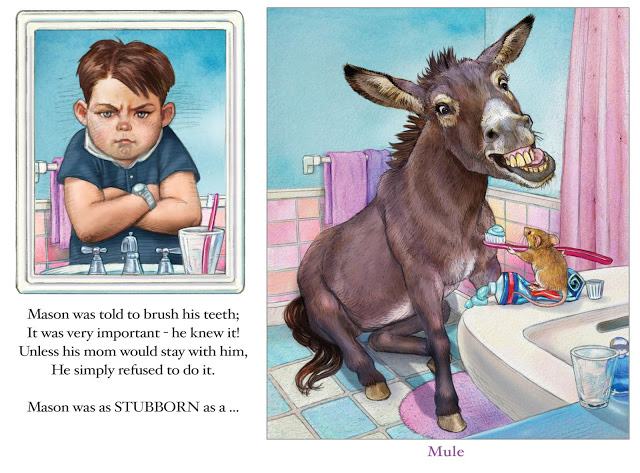 |
| from As Proud as a Peacock … a book of similes by Michael Adams |
“I consider it my job to make ideas come to life. So I generally blend several different mediums to make sure the author’s project comes out perfectly. A lot of my work is done as a mix of watercolor and digital painting…that might be anything from a book cover, to a fantasy map as an interior illustration. Nothing is out of the question!”
 |
| “Lack of Focus” by TessaKay |
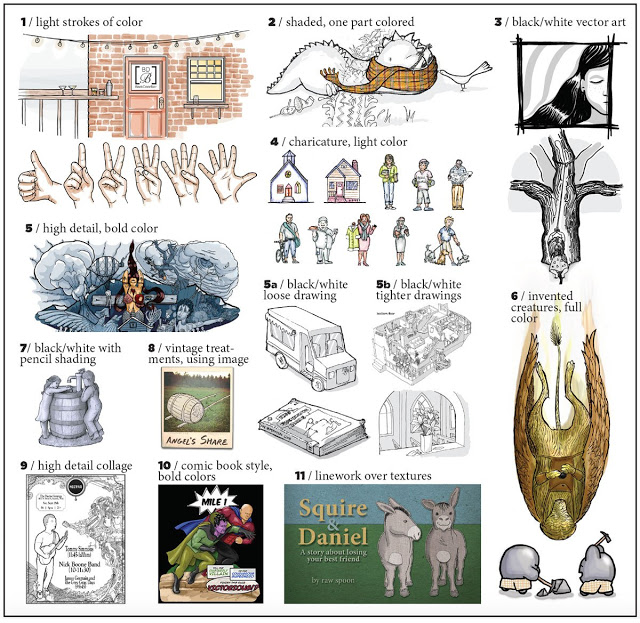 |
| a sampling of Raw Spoon’s work in book illustrations, band posters, and other pieces |
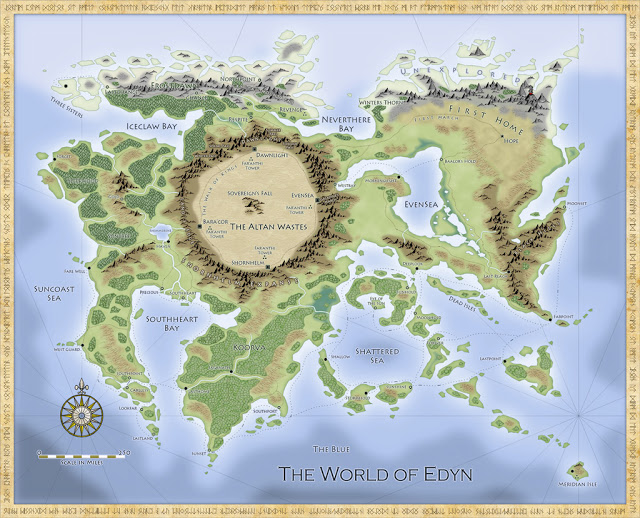 |
| The World of Edyn from “Mythborn: Fate of the Sovereign” (Book 1 of the Mythborn Saga) by Vijay Lakshman |
 |
| An illustration from “Mommies and babies” illustration series |
 |
| “Jenny”, illustration for K.M. Weiland’s Storming |
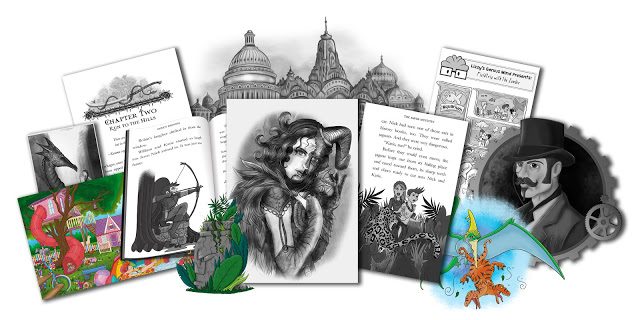 |
| Mikey Brooks Brings Life to Words with Art |
 |
| From Archibald and the Giant Philistine by Laura J. Marshall, created by Mary C. Findley with textures and images in PhotoImpact |
Karmada Arts
“A manga-styled (Japanese comics) artist, who specializes in traditional materials such as pencil, ink, and art markers. Also versed in watercolors as well as some digital art, and often is found working on comic projects or illustrative works.”
“I love to create complete and polished maps for people. You can send in the rough sketch for your book, or any place you’re fond of, and I will turn it into a detailed piece of art. Materials: Pen and white paper for a digital copy and/or I can create a hard copy to send to you (for which I use thick paper I dye with coffee and tea).”
 |
| cover for To Swim with Dolphins |
Mythspinner Studios
“I’m a fan of science fiction, space opera, dystopian fiction, fantasy (light and dark), steampunk, dieselpunk, atompunk, cozy mysteries, well-written ghost-stories, and all things mythological. My eclectic tastes reflect not only in my work but play a role in deciding what commissions I take.”
 |
| Cold Night on the Mountain |
 |
| Photo by Ilya Pavlov on Unsplash |
So you’ve written a book, and you’re asking yourself, “Do I really need an editor? I’m pretty good at writing, after all. I caught a few mistakes as I went through, and I don’t think there are any more. Maybe I should just save money and publish the book as is.”
Yikes!
Sorry to burst your bubble, but, to put it bluntly, you’re wrong. We ALL need editors! That is, certainly you can and should go through your own manuscript and search for errors. But as authors, we’re just too close to our own stories to catch everything. Trust me! It doesn’t matter if you’ve earned an “A” on every English assignment through elementary, middle school, high school, and college. It doesn’t matter if you’re a full-time writer or an English professor. NOBODY gets it all right all of the time, and that’s why professional proofreaders and editors are absolutely essential for authors.
First, some definitions. There’s more than one type of editing, after all
What’s the Difference between Line, Copy, and Content Editing?
I recommend taking a look at the article at this link. Pavarti K. Tyler explains what each kind involves and why your manuscript needs them.
At the end of this post, I’ve compiled a list of professionals you can contact for your editing and proofreading needs. In the meantime, let’s go over some tips for improving your own writing as much as you can. The more problems you find and fix, the less your editor will have to do, which will probably make the editing process cheaper, quicker, and simpler.
The following posts and articles are ones that I’ve collected from all over the internet and can highly recommend for their useful content. I recommend checking them out, bookmarking them, and referring back often throughout your writing and editing process.
19 Best Titles for Self-Editing
Corina Koch MacLeod and Carla Douglas have compiled a list of helpful books that would make great additions to your library. Best of all, they’ve organized them in categories according to the level of writing they are intended to help with: big picture, paragraph level, sentence level, word level, and some designed to provide inspiration for writers.
100 Editing and Proofreading Tips for Writers
Duncan Koerber has a lot of useful ideas here, including some on how to even approach the whole process.
These are big-picture tips relating to story structure, conflict, character motivation, etc.
Do you have too many details in your descriptions? Not enough? Jill Williamson will help you see what to do about either problem.
Hunting Down Story Holes Using a Novel Journal
David Stafford has a unique idea for how to keep track of seasons, location layout, character traits, etc. You don’t want to be inconsistent in your story!
How to Strengthen the Theme of Your Book During Edits
Does your book have a theme? Should it? Did you mean to give it one but not start thinking about it until halfway through your first draft? Stephanie Morrill will help you fix that in the editing stage.
Susan Uhlig has some helpful suggestions, many of which deal with the big picture of your story as opposed to tiny details.
How to Write Well: 10 Essential Self-Editing Tips
C.S. Lakin has some great tips for punctuation, grammar, and a few other issues. Each one is quick to read and easy to understand, but you’ll want to go back through your manuscript slowly and carefully to check that you’re applying them as well as you can.
We all have words and phrases we tend to use too often without realizing it. Sporkforge will tell you what they are, along with a number of other nifty functions.
20 Common Grammar Mistakes That (Almost) Everyone Makes
In this article, Jon Gingerich lists some common errors, especially between pairs of words that are commonly mixed up (like “continually” vs “continuously”). Better yet, he explains why the right one is the right one for each certain context. It would be a good idea to read through the list, and if anything there surprises you, search for that word in your manuscript and make sure you’ve used it correctly.
Grammar Girl’s Editing Checklist
Another great list of types of mistakes to look for in your writing. You may even want to print this one out and keep it by your computer for reference.
ProWritingAid Review: Is It Worth It?
ProWritingAid is similar to Grammarly, but many authors and editors feel it’s better. Check out this review by Kindlepreneur’s Dave Chesson, whose valuable insights into many aspects of writing, editing, and publishing have helped me a lot in my own self-publishing journey. You might find that ProWritingAid is just what you need to take your own editing to the next level.
So, what happens after you’ve done everything you can to edit your own manuscript? Time to turn to the professionals.
Choosing the Right Book Editor
How do you know which editor will work best for you? ChatEBooks has some great suggestions. After you read them, scroll down and browse the list of editors, and check out some of their websites to see what services they offer and who might be right for you.
5 Questions Every Indie Author Must Ask Before Hiring an Editor
Once you’ve found a few editors who look like a good fit for your book, A. Denefield Jones has some good suggestions about things to ask them before you sign a contract.
And now for the list! Without further ado, here are way more editors than anyone would ever need. 🙂 Just click on their names to visit their websites. (Disclaimer: yes, the first name there is mine. 🙂 I mainly do line editing, but you can check out a full description of my services at the link.)
Stephanie Aspasia Marshall Ward
Do you know any other editors you’d like to recommend? Can you think of some great self-editing tips not mentioned here? Feel free to tell us in the comments!
So You’re an Author Without a Social Media Presence: Now What?
Jane Friedman talks about how to get started. She includes a number of links to other helpful articles on specific related topics.
14 Must-Do Social Media Tips for Authors
Laurence O’Bryan gives some quick and simple general tips, many of which are applicable to more than one type of social media.
Note that you certainly don’t need to be active on every possible form of social media (and most authors don’t have the time for that, anyway)! It’s best to pick a few and focus your efforts on those. Here are some options to choose from, along with more articles you’ll find useful when it comes to your online presence as an author. I think the titles speak for themselves.
a.) Website
How to Build the Ultimate Author Website (in 1 Hour)
Website Tips for Authors
Author Website Templates
b.) Blog
Blogs: Elements and Design
140 Tools and Resources for Building Your Author Website and/or Blog
13 Blog Post Ideas for Novelists
10 Ways to Promote Your Book on Your Blog
How to Create a Social Media Marketing Plan for Your Blog
c.) Facebook
How to Optimize Your Facebook Author Page to Sell Books
14 Ways to Promote your eBook on Facebook
d.) Twitter
Twitter 101 for Authors: Hashtags, Dos and Don’ts
8 Twitter Resources for Authors
5 Things for Authors to Tweet About (That Aren’t “Buy my Book!”)
e.) Pinterest
34 Strategic Ways You Can Use Pinterest to Market Your Book and Your Author Brand
From Fun to Serious: How I Use Pinterest Differently Now
f.) Instagram
Simple Instagram Tips for Authors
Top 7 Ways Authors are Using Instagram
How to Use Instagram as an Author Plus 10 Ways to Grow Your Account Organically
h.) Tumblr
Tumblr for Authors: How to Get Started
Tumblr 101 for Authors
Tumblr Tips for Writers
i.) YouTube
Video Marketing and YouTube Tips for Authors
Beyond Book Trailers: 4 YouTube Strategies for Authors
j.) LinkedIn
The REAL Power of LinkedIn for Authors
12 Ways to Leverage LinkedIn for Book Promotion
6 Top Tips on How to Make LinkedIn Work for Authors
Should you even try to make your own book cover? This post by June Stevens Westerfield may help you decide.
Next, you may want to take a look at Amazon’s criteria for Kindle book covers and paperback book covers to make sure that yours will meet the requirements.
Author Tamie Dearen has compiled a list of sites where you can find free images to use in book covers or other designs.
My Book Cave has a two-part series on book cover design. Part 1 is about picking the right image, and part 2 deals with setting up your file and image.
Author Bruce Fotler has a great article about his “book cover blunders“, with mistakes for newbie cover designers to avoid. He includes links to other helpful cover-related sites.
YouTuber Derek Murphy has a video about 7 must-have qualities for a book cover that sells. Make sure to check out his link under the video if you want more video options about cover creation.
The same Derek Murphy also has a useful list of specific fonts that work well on book covers, organized by genre.
Perry Elisabeth has a great blog post about those fonts and how to use (and not overuse) them on covers.
And, Derek Murphy has an article listing cover design “secrets” that can be used to “manipulate” people into buying books.
Starla Huchton, herself a cover designer, has a great article with some quick tips for cover design.
She’s also written an article about the costs of a good cover, and how to end up with an affordable one.
Canva is a great site on which you can create your own cover for free.
These people give instructions for how to create a cover using Microsoft Word or Photoshop.
Want to get elaborate? Here is Derk Muphy’s explanation of how to create an animated (gif) cover for your ebook!
Want to put several books together into a boxed set, but unsure how to make your existing cover work for that? Lisa Shea explains how in this article. Indies Unlimited has another explanation of how to do it using Gimp.
Have you made a cover, but you’re wondering if it’s any good? The Rate My Kindle Cover site will let you upload it and get feedback (for free!) before you publish your book.
Have you made two or more variations on a cover, and you want opinions from your friends, family, or the fellow authors in your writing group on which one is better? Stephen Oram explains how to use a survey to choose.
This article, and the accompanying infographic, covers the topic of book cover design thoroughly (including what to do if you decide to work with a cover designer).
Finally, here are some book cover artists you can contact if you’re looking for someone to design the perfect cover for your own book. Note that some of them have specific styles or focus on specific genres, so you’ll want to choose carefully as you consider what will work best for your book – and of course your budget.
Affordable Book Covers and More
Blue Valley Author Services
Book Cover Bakery
C.K. Volnek
Cover Shot Creations
Damonza
Deranged Doctor Design
The Design in Your Mind
DogEared Design
E Kaiser Writes
Fury Cover Design
GoOnWrite
Indie Book Cover Sales and Design
Indie Cover Design
Indigo Forest Designs
Jennifer White
The July Group
Karmada Arts
Littera Designs
Magpie Designs
McCorkle Creations
Mythspinner Studios
Paper & Sage
Perry Elisabeth Design
Psalm 40 Publishing Services
Seedlings
Time Keeper Art
Tugboat Design
And if you’re planning to work with a cover artist, don’t miss Joel Friedlander’s tips, or Starla Huchton’s blog post on that topic.
I hope these tips are helpful! If you have any other cover artists to recommend, or if you know of any other useful articles on the topic of cover creation, please feel free to mention them in the comments! You’re welcome to share tips of your own, too.
First, the synopsis. This is longer than a blurb, and most indie authors don’t have to write one very often. But if you’re trying to get the attention of an agent or publisher, you will probably need a synopsis. Krystine Kercher has a useful article about how to create one. Suzanne Purvis has a good one, too, complete with examples. And Sarah Juckes’ article has practical, step-by-step instructions.
Next, a logline. As the folks at Writers Helping Writers explain, “a logline is a one- or two-sentence pitch that explains what your story is about in a way that makes listeners want to read it.” Some book promo sites ask for loglines, and they’re also useful when people who don’t have much time to sit and listen hear that you’ve written a book and ask you what it’s about. This article gives some great examples and talks about how to write good ones.
And now for the blurb. Here are some of my favorite resources:
The Fussy Librarian suggests techniques for how to write an “irresistible” blurb here.
Author Pauline Creeden has a 3-part blurb writing “clinic” on her blog. Part 1 lists 12 dos and don’ts. Part 2 explains how to write a tagline (similar to logline, but not the same). Part 3 explains what to do in a blurb if your book involves multiple genres and main characters.
Fix My Story talks about how to write an “incredible” blurb, complete with tagline, here.
Starla Huchton lists several types of blurbs and how to tackle each of them, on her blog.
Sophie Masson lists several elements, both optional and required, of a good blurb, here.
And now for the one I have personally found to be the most helpful. Author Libby Hawker has a fun and useful video about blurb writing here.
Some people suggest formatting parts of your blurb (e.g. with bold, italics, different sizes, or color) to make it really stand out on Amazon and other sites. Here are a few resources on that topic:
In this article, the Fix My Story folks talk about how to use simple HTML to format your description on Amazon.
Here on Kindlepreneuer, they will actually generate the HTML for you. All you have to do is paste in your blurb and format it with easy buttons such as you’d find in Microsoft Word.
Finally, for those familiar with HTML and knowledgeable enough to use it on their own, Amazon itself has a list of the HTML tags supported on their site.
I hope these resources are useful! And if you have links to others that you use, or would like to share your own suggestions about how to write a good blurb (or synopsis, logline, tagline, or anything similar), I’d love to hear about them in the comments!
The solution is to create a global URL that will take anyone, from any country in the world, to your book’s page in their own country’s Amazon store. Here’s how to do that in ten easy steps!
1.) Go to https://manage.smarturl.it/ and log in or create a free account. (You can do this without an account, but I recommend creating one so that all your info will be there later for you to go back to. For example, the next time Amazon sets up a store in a new country, you’ll want to be able to just add that one to your list without having to do everything all over again.) Make sure you wait until you receive a confirmation email, and click on the link in the email to verify your account. Parts of the process below won’t work before your account is verified.
2.) Click on “Country”. Here’s what you’ll see (don’t be confused about how it says “music”; this really will work for books):
3.) Where it says “default URL”, paste in the link to where your book is available on Amazon. Even if you’re not in the US, you might want to use the link to the book on the Amazon US site, since that’s the most commonly used one. That’s where the global URL you’re about to make will take people if the system can’t figure out where they are in the world, or if their country doesn’t have its own Amazon store.
Be sure you know whether the link you’re using is to the paperback edition, or the ebook. Either will work, but you want to know what you’re directing people to. 🙂
4.) Open a new tab and go to https://kdp.amazon.com/, then sign in to access your KDP Bookshelf. Next to the title of your book, there’s a drop-down menu that says “view on Amazon”. There, it has links to all the different Amazon stores around the world where your book can be found (US, UK, etc.)
Click on the links to open each one in a new tab.
5.) Back at the Smart URL site, go to the section that says “Country Destinations”. Where it says “Country”, type in the name of one of the countries where Amazon has a store, e.g. India. Then go to the tab you opened where you can see your book in the Amazon India store. Copy the address from there and paste it into the bar that says “URL” next to “country” on the Smart URL site.
6.) It’s possible that the site will then automatically fill in the names of more countries and your book’s address in them. However, it may not include them all. Check back on your Bookshelf to make sure every country with an Amazon store is really represented in the list. If not, click on the orange circle with the + on it, to the right of the URL bar back on the Smart URL site. It will open up a spot for you to do fill in the information again with a new country. Keep doing it until you’ve entered the information for all the different Amazon stores.
If you want to test the links, you can copy them one by one and past them into your browser. You should see them take you to your book’s page in the other Amazon stores. However, I’ve never had a problem with the system filling in incorrect links.
Here’s how mine looked when I was done with this step (though depending when you read this, I may have gone back and added more countries as Amazon adds more stores):
7.) Below that, where it says “Organize (Optional)” you can create a custom alias using the name of your book, or part of the name. For example, I have http://smarturl.it/gladiatorguard for my book The Gladiator and the Guard.
8.) “Description” is just for your own reference. In mine, I wrote “The Gladiator and the Guard from any country.” If you plan to do this for multiple books, it’s helpful to have a description that will remind you which one is which.
9.) I don’t use anything below that in the online form. If you want to look into it, you’re on your own. 🙂 But the most important part is, make sure you click the orange “Save” button at the bottom!
10.) After that, you’ll see a button at the top right in the black bar that says “my smartURLs”. If you click on it, you’ll see the one you just created, with a “Create smartURL” button at the bottom that will let you create more. Here’s what my screen looks like, with all the smartURLs I’ve created for my various books:
If you hover your mouse over the word in the first column, you’ll see three little icons appear. The middle one, shaped like a clipboard, will let you copy the URL to your clipboard. You can then paste it into your email signature, a document of your own for offline reference, a form on a promo site where you’re submitting your book, etc. And anyone, anywhere, who clicks on it will then see your book in their own country’s Amazon store!
 For the release of my YA action and adventure novel The Gladiator and the Guard, I put together a
For the release of my YA action and adventure novel The Gladiator and the Guard, I put together a huge blog tour, along with a giveaway. Some parts went better than others, so here’s what I did, how it went, and how it all worked. I hope this will benefit someone out there!
Several weeks before the release date, I used SignUpGenius to create a form where people could sign up to host my new book on their blog on certain dates. I love that site – it makes everything so convenient, and keeps track of all the information in a nice organized format! If you haven’t used it, I highly recommend checking it out. (Best of all, it’s free!)
I used Rafflecopter to set up my giveaway. In case you’re not familiar with how that works, it’s another great free site! It creates a form that can be embedded in or linked to from a blog or website, and the same form can be placed on multiple sites. People can enter the drawing for the giveaway – in this case, to win an Amazon gift card and a digital copy of my first book in the series, The Collar and the Cavvarach – through a number of means. I set it up so that those included retweeting a tweet about the giveaway, following me on Twitter, liking my author Facebook page, etc.
I set up the blog tour to last about six and a half weeks, which in retrospect was too long. At least, it was too long for me, what with my day job and other things going on in life. I just didn’t have the energy to keep up with everybody’s blog posts toward the end! For each day, I gave bloggers several options for different types of posts: author interview, excerpt, review, basic premade post, or “other” (with a place for them to fill in their suggestions). That meant that most days, four or five different people were featuring my book on their blog at once. Which was great for exposure, but it got to be a lot for me to keep up with in terms of sharing the links on my social media and visiting each one. And I think my Facebook friends got tired of me crowing over all the places The Gladiator and the Guard was being talked about every day!
How did I get bloggers to sign up? Well, I posted in four or five different author groups that I’m part of on Facebook, asking people to click on the link to sign up to host my book. Then I went through my records in my author email account and also on this blog, and made a list of every author who I had ever hosted or whose books I had helped to promote in any way. I typed up a form email describing my new book, explaining about the blog tour, and asking if they’d be willing to help. But I sent it out to one person at a time, personalizing each email by addressing them by name and sometimes making additional comments based on how well I know them or what interactions we’d had in the past. And for each participant, I offered to include one of their social media links in the Rafflecopter (so that following them on Twitter, for example, was one way for people to enter the drawing).
Although I included the link to the SignUpGenius form in my email and asked people to put their info there, it was amazing how many people did not click on it but instead just emailed me back to say that yes, they could help. With some, it took a few emails back and forth before they understood that SignUpGenius was the place to let me know what kind of post they wanted to do on what day. A few never did fill it out, so I just filled it out for them. (Besides keeping all the information in one place, the advantage to having it on SignUpGenius is that the system will automatically email participants a reminder about what they signed up for a couple of days beforehand.)
Responses came in thick and fast, several per day for the next couple of weeks before eventually fading off to a trickle. I didn’t want to lose track of who I had already communicated with about what, so I created an Excel spreadsheet with columns for the blogger’s name, their response (if they were willing to help or not), what I did in reply (e.g. sent them a review copy of the book if they requested it), what I still needed to do (e.g. send them the links for where to post their reviews, once the book was live). Unfortunately, SignUpGenius does not allow people to leave links anywhere on their form, so authors had to email me separately to tell me their Twitter handle or Facebook page to include in the Rafflecopter. So, I made another column in my spreadsheet to keep track of that information and whether or not I had added their link yet. Then I made a final column to fill in later, to indicate when I had sent all materials they had requested for their blog.
Many busy bloggers requested the premade post. I posted it on my own blog too; you can see it here. It included basic info about the first book in the series, plus the covers of both books. I also included The Gladiator and the Guard‘s back cover blurb, buy links, my own social media links, and a brief author bio and author pic (though I didn’t include those last two on my own blog, since my readers already know me and that info is available elsewhere on my blog). Of course the Rafflecopter giveaway was on there as well. I offered to send all this to bloggers in html, so that they wouldn’t have to format everything and put in all the pictures separately. Almost everyone enthusiastically took me up on the html offer, with only two or three people asking for the text and pictures separately so they could set it up themselves. I always prefer html when I’m hosting someone else’s post on my blog. It’s so much quicker and easier!
I know from my own experience in hosting others’ blog tours that I don’t always remember exactly what I’ve signed up to do, especially when I sign up far ahead of time. It helps when the author emails everyone a list of who is doing what kinds of posts on what dates, or when she sends me a specific email with the exact info I need. When she sends one email with fifteen attachments to everyone who signed up, saying, “Download and use the ones that apply to you,” it’s a lot more confusing. (But SignUpGenius makes it easier for everyone to check exactly what they signed up for.) Anyway, I sent out separate emails to people, giving them exactly (and only) the materials they had requested, which I think helped to avoid confusion and frustration. It did take me a little longer that way, but I’m glad I did.
As a blogger myself, I know that many bloggers host lots of authors’ books and help with various blog tours. When I emailed people about the event, I made sure to mention the name of my book each time. After all, I often get confused when someone sends me an email that just says something like, “Please add a note to the bottom of your post to tell readers my book will be free at the time,” with no mention of what their book is or when it’s scheduled to appear on my blog.
I asked every blogger involved if they would please tell me the permalink to their post once they got it set up. Only a small handful did (maybe 10%?) though a few others emailed me the day their post went live to let me know. In most cases, I had to simply search online to find that person’s blog in order to share the link on my social media. If you’re featuring someone, I suggest you let them know exactly where and when! You want them to help drive more traffic to your site, right? And it’s easy to set up a post ahead of time, at least on Blogger. (I can’t speak for WordPress, but I know people who do it there too, so I don’t think it can be too hard.) Just use the “schedule” button at the right to choose a date, and click on “permalink” to see the exact link to that exact post. (I’m editing this to add: someone who blogs on WordPress just told me it’s easy there too. You can do it through the calendar icon to the right of the “publish” button.)
When the book was live, I emailed everyone who had agreed to review it and gave them the links to several places to leave reviews: Amazon, Goodreads, Smashwords, Barnes & Noble, Kobo. By the next day, there were 10 reviews up on Amazon, but only a few in any of the other places (though someone did point out that you can’t leave a review on Smashwords if you haven’t actually obtained the book from there). More reviews trickled in over the next few days and weeks from people who couldn’t quite make the deadline. I found I didn’t mind too much about the delay. I’m grateful for reviews any time I receive them! But I do wish more people had left reviews in more of the places I’d asked them to.
I have no way of knowing how many people visited each blog when my books were featured there. However, I definitely noticed that I had more entries in the giveaway when the title of the person’s blog post mentioned the giveaway. It makes sense. Not everyone cares to read every blog post, even by a blogger they like. But if they know beforehand that they could win something – well, who doesn’t like free stuff?
Each day, I made sure to visit each of the blogs that was hosting The Gladiator and the Guard that day and leave a comment thanking the blogger. I’ve always been told that’s good etiquette, and people seemed to appreciate it. I admit that I did get a little behind, especially toward the end of the blog tour when things got busier in my non-writing life, but I caught up on all of them eventually. I also made sure to share the links on my social media every day (though I didn’t do that for the ones who just posted the premade post, since I figure none of my friends wants to read the same description day after day). Each time, I tried to say something unique and interesting about it, such as a hint of what the excerpt was about, or a question or two from the interview, to get people curious and make them want to click on the link. I always tried to tag the blogger when I did so, so that their friends would see it too. I was surprised at how many of the bloggers did not say anything on their social media when the posts went live on their blogs. I’ve found that doing so is the best way to drive traffic to my blog. (Well, that and having other people share the links too.)
Anyway, here are a few of the main points that I took away from the whole blog tour experience. I intend to make sure I apply both the suggestions for authors and the ones for bloggers from now on!
Suggestions for Authors:
If you have a premade post for people to share on their blogs, get it formatted on your own blog first, and then give them the option of receiving it in html format. It saves bloggers time!
Only send each blogger what she really needs. Including lots of attachments that don’t apply to everyone just makes it confusing and makes more work for people who are doing you a favor.
Mention the name of the book being featured each time you communicate with a blogger.
When emailing bloggers individually, mention the date on which they will be featuring your book (at least if they have not sent you the permalink to the post. If they have, they’ve obviously got it scheduled and don’t need a reminder).
Visit each blog that is hosting you when the post is live, and leave a comment to thank the blogger.
When you do, check the box that says you’d like to receive email notifications when anyone else comments (so you’ll know if other people are talking about your book or the post).
Share about each blog stop on your social media to help direct more traffic there.
When you do, tag the bloggers involved.
Suggestions for Bloggers:
Even if an author sends you a pre-formated post in HTML, look through it after you paste it into your blog. It might still need minor adjustments to look right. (Yes, I speak from unfortunate experience.)
If you’re hosting a giveaway, mention it in the title of the post. (e.g. “The Gladiator and the Guard: an Exciting new Adventure Story with a Giveaway!”)
If you’re hosting a giveaway, say so when you share about your blog on social media.
If you share on social media about an author you’re featuring, tag her so she can easily share your post, retweet your tweet, etc. Plus, then her friends and followers will see it too.
Set up the post as soon as you have the necessary materials and schedule it for the day you agreed to post it, so you can’t forget closer to the time. 🙂 (I had several bloggers who forgot!)
Then send the author the permalink right away. Why wait till the day it goes live?
If you agreed to review the book, post your review in all the places the author asked you to. If for some reason you can’t, or if you can’t do it by the agreed-upon date, email her and let her know so she doesn’t think you just can’t be bothered.
Authors and bloggers, do you have any suggestions of your own to add to these? I’d love to hear about them in the comments!
Click here to see a list of sites where you can promote free books at no cost.
Click here to see a list of sites where you can promote free books for a fee.
Click here to see a list of sites where you can promote discounted books at no cost.
In some cases, as you can see, I’ve made notes about certain useful-to-know details, such as the fact that some sites don’t actually require the books to be exactly 99 cents. If you have additional information about any of these sites, feel free to share it in the comments. It would also be great to hear if you have tried any of them, and how they have worked for you.
Please let me know if you find any broken links or outdated info, or if you know of any paid promo sites for free books that I have not listed. I will try to maintain this list and keep it as thorough and accurate as possible!
[googleapps domain=”docs” dir=”spreadsheets/d/1mQecpuMTECVyNs76kxbHUWH8FgEKWWz3lsLwGOewapI/pubhtml” query=”widget=true&headers=false” width=”100%” height=”1000″ /]
Related lists:
Click here to see a list of sites where you can promote free books at no cost.
Click here to see a list of sites where you can promote free books for a fee.
In some cases, as you can see, I’ve made notes about certain useful-to-know details, such as the fact that some sites don’t actually require the books to be exactly 99 cents. If you have additional information about any of these sites, feel free to share it in the comments. It would also be great to hear if you have tried any of them, and how they have worked for you.
Please let me know if you find any broken links or outdated info, or if you know of any paid promo sites for free books that I have not listed. I will try to maintain this list and keep it as thorough and accurate as possible!
[googleapps domain=”docs” dir=”spreadsheets/d/16E6zyLFZIv5Qn477lPXYgoa6QmMivgC_t0NJ8Zfms7s/pubhtml” query=”widget=true&headers=false” width=”100%” height=”1000″ /]
*Want to save some time? Let me submit your 99 cent book to ALL of the highlighted sites for you. This service will only cost you about as much as a cup of coffee! Click here to sign up or find out how it works.
